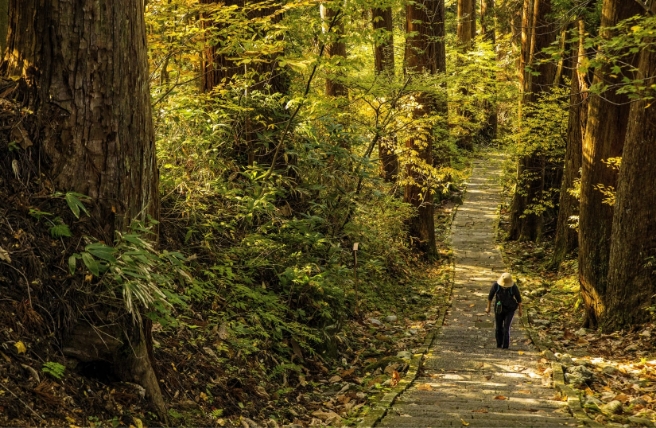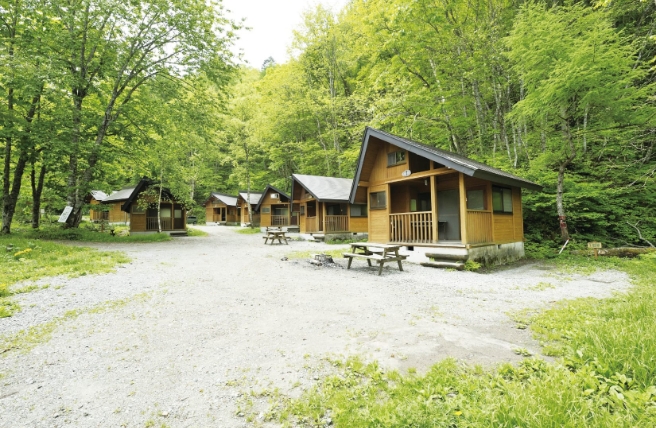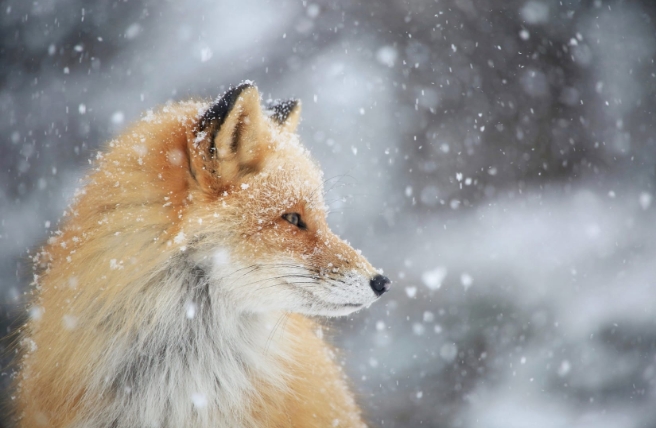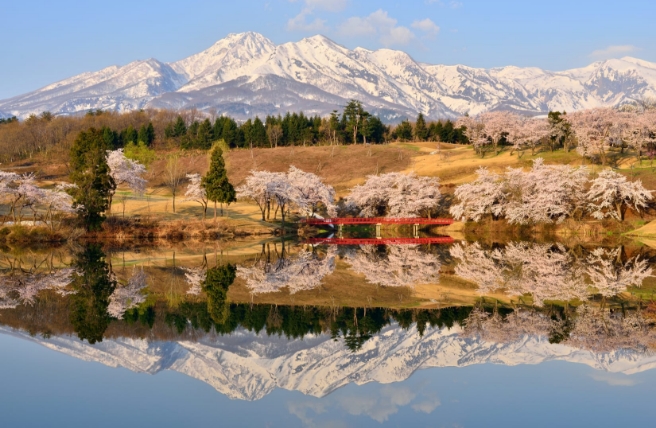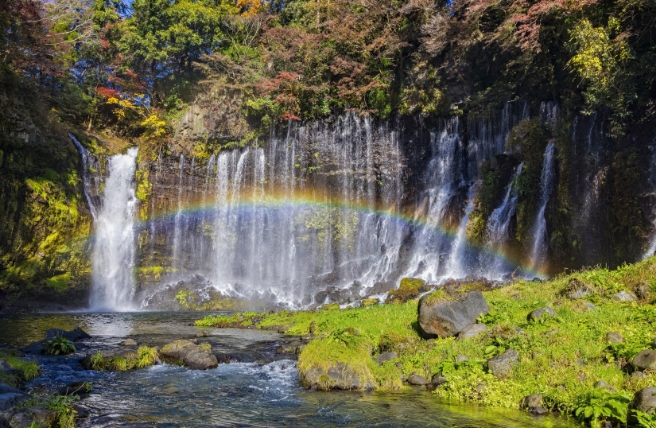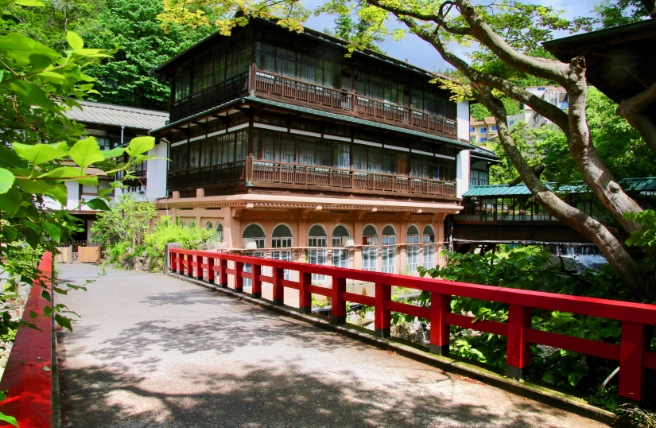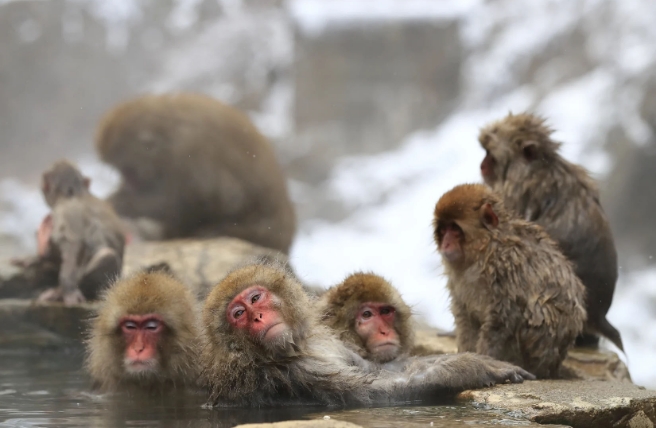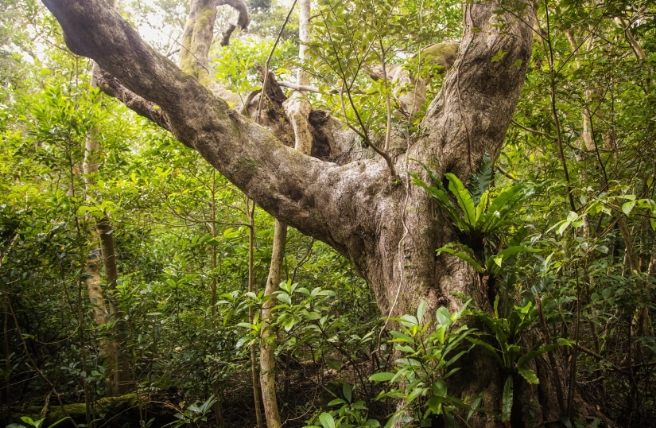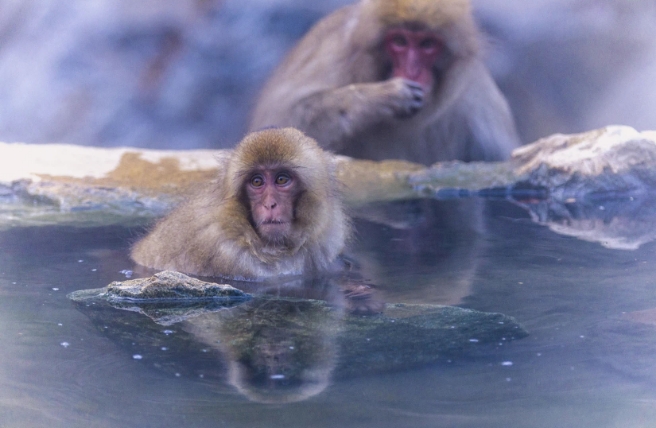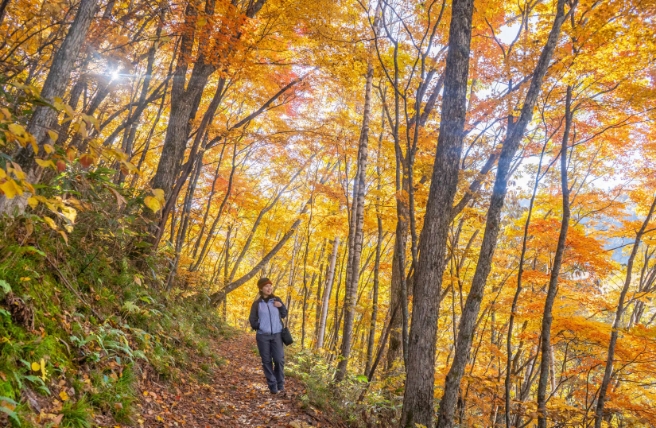I stare down into the den nervously, half-expecting to see a sleeping bear growling up at me—but there’s no one home. I breathe a sigh of relief, tinged with faint disappointment.
We’re deep in the forest near Karuizawa, the air full of high bird calls and the whine of cicadas. Six of us have made our way here, stepping carefully over twisted roots and scrambling up slippery, leaf-covered slopes to convene around this small, dank hole in the rock. Two interns from Picchio Wildlife Research Center are now busily measuring the den and taking notes. Kusube Masaya, Picchio’s Marketing Director, explains a little more about the absent residents.
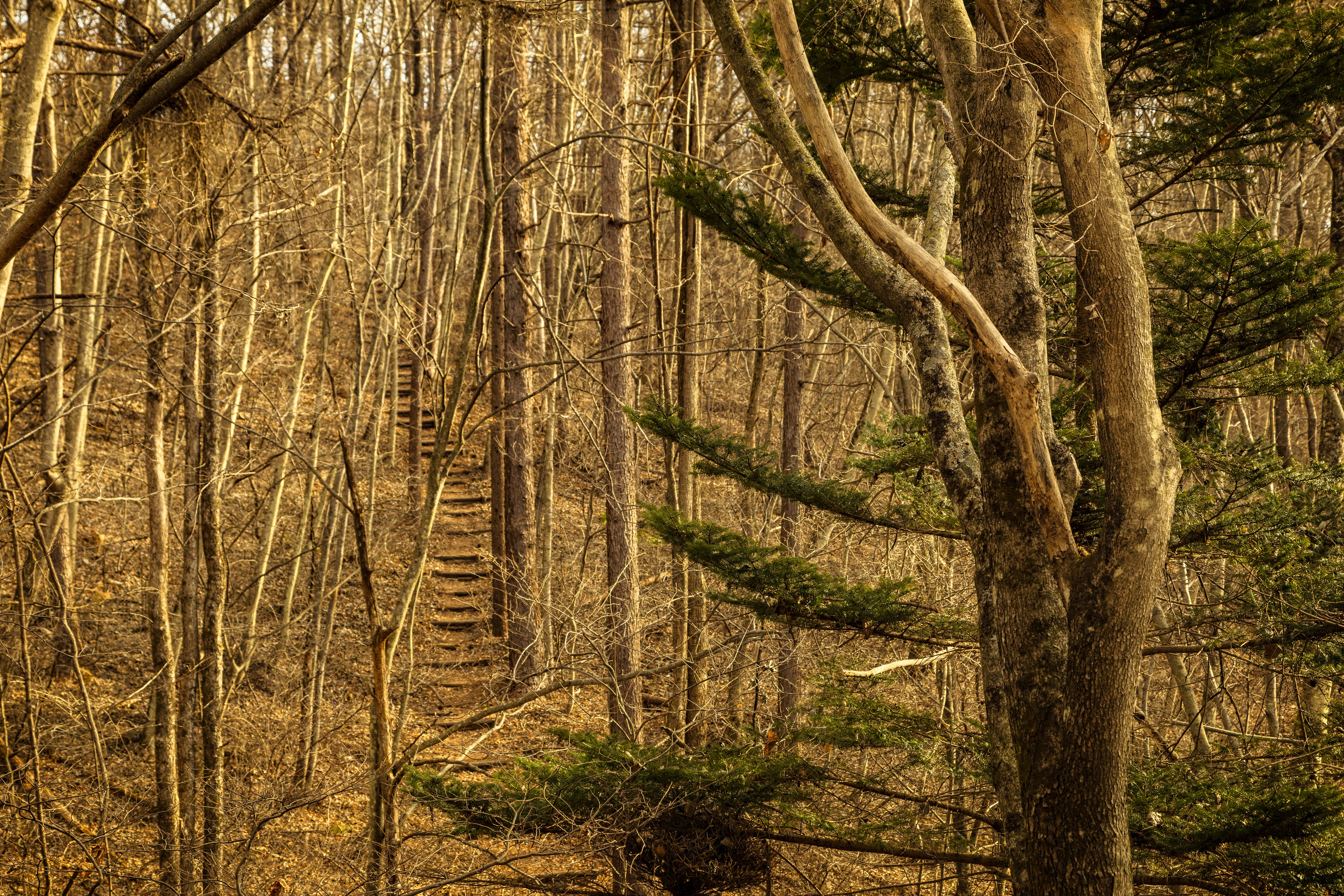
“This is the den of a mother bear, who we call Lucy, and her two cubs. Around this time, they should be out getting food. The black bears here are actually really close to vegetarian. They only eat beehives and ants’ nests—they don’t even hunt salmon or trout.”
“Black bears are very shy animals,” Kusube continues. “It's really difficult for us to encounter bears in the forest, because when they sense us they just run away. But of course a mother bear with cubs is more protective, so that makes Lucy a bit more dangerous right now.”
Measurements complete, we head back through the forest. My eyes are constantly drawn to something new: animal tracks, the metallic tint of birch bark, or the light shifting on a thick, spongy bed of moss. Tamatani, another Picchio employee, walks ahead of us, his focus sharp while my attention wanders. A cheery tinkling sound rings through the woods with each step he takes, from the bell he wears to warn those shy bears of our presence. I recall the advice we’d been given about hiking in these mountains before setting out: always carry a bell and make noise as you walk, keep food wrapped up, and never approach a bear.
Japan’s black bears are smart as well as shy. They generally stay in the forest, well away from people—unless, says Kusube, “an individual bear finds out they can easily get food in town, maybe from the garbage, and that humans aren’t that scary. Then they might become a problem.”
Picchio has spent years trying to balance the needs of Karuizawa’s human residents with the needs of bears and other wildlife of the area. We spot some fortress-like dumpsters as we drive to our next stop, one of the many practical steps they’ve taken to make a trip into civilization unappealing to bears. And keeping them away isn’t only for the humans’ sake.
“In 2003 and 2004, a lot of bears were coming into towns in Japan,” Kusube explains. “Out of 4,500 that were captured, 4,000 were removed—which means killed. We thought that, if that kept going, it wouldn’t be sustainable, we would lose our bears. Instead, we should try to find a way to coexist, to create a borderline between the animals and ourselves.”
To find out more about how Picchio maintains this border, we emerge from the forest at a viewpoint where the horizon opens up before us. The view is breathtaking, sweeping across our whole field of vision; gentle wooded slopes give way to saw-toothed mountains. Tamatani strides over to the railing and begins unpacking a radio antenna.
“Each bear behaves differently. Let’s say one comes into town and causes damage, then maybe three hours later you form a hunting team and go to the forest and shoot a bear—it may not be the one that caused the damage. So then the bear with dangerous behaviors will keep causing trouble, and you’ve killed one which is not a threat.”
Tamatani is now scanning the valley, holding the antenna aloft and listening to it crackle and buzz through headphones.
“That’s why we have to know which bear is causing the problem,” Kusube-san continues, surveying the glorious landscape. “To find that out, we put a radio collar onto each bear in Karuizawa that we capture, and we release them, and we radio track them every day, 24 hours. So if a bear gets too close to a residential area, we go and chase them back into the forest, one by one. That way, they learn that coming near the town is scary, and stop doing it.”
I’m offered the antenna, and start waving it about, feeling distinctly uncoordinated. As the sounds coalesce into one uniform hum, my heart jumps excitedly. There’s a bear in the valley, to our left. I’m told that the signature indicates that it’s Lucy, whose den we just visited. And that slightly different buzzing when I turn to the right? That’s Ikura, who at 24 is the oldest bear with a radio collar. She’s further away, heading eastward.
At several other spots I find myself frowning, not sure whether the antenna is picking up another collar. As Kusube explains, “This is the problem with only using the collars—it’s quite difficult because the signals bounce a lot in the valley. That’s why we started to use Karelian bear dogs a few years ago.”
Meeting the dogs is the next item on our agenda. The car pulls to a halt at the end of a dirt track deep in the woods, and I hear frantic barking as I get out. Looking towards the noise, I’m surprised by the sight of three excitable black-and-white dogs, bounding to the fence with curly tails wagging. They seem like eager, overgrown puppies, not the fearsome beasts I’d expected.
Each one is introduced: clumsy Tama, black with a white marking sweeping around her neck; Elf, similar looking but less prone to tripping over things; and Rela, with longer, fluffier fur that makes her look the most like their mother, who sits in a relaxed but alert posture nearby.
Engrossed in petting the dogs, I almost forget why we’re here. But then, they all snap into the same position, staring fixedly at a point in the trees. After the snuffling and barking, the silence is almost eerie. We stare into the foliage too, and eventually spot the round eyes of a Japanese giant flying squirrel peeking out of a hole in a trunk, its placid gaze locked with ours. Eventually, the dogs decide the small mammal isn’t a threat, and return to playing.
“These dogs are too young to have started training yet, but as you can see they have sharp instincts already,” Kusube observes. “The adult bear dogs make us really safe because they can sense bears that don't yet have a radio collar, and chase bears away.” Dogs which are too large or aggressive, it turns out, are poorly suited to this task. “They need to be agile and quick, and to bark and scare the bears so they learn not to come near the town, but not attack or hurt them.”
Eventually we tear ourselves away from the affectionate dogs, and return to our hotel. For the next couple of days, we devote our time to the other wildlife-spotting opportunities in southern Joshin’etsukogen National Park. We watch Japanese giant flying squirrels groggily waking up in their nest box via a video feed, then witness them swooping overhead as they leave it for the night. We spot a troupe of macaques with tiny babies clinging to the adults’ backs, almost as close as the bathing monkeys we’d seen at Jigokudani Monkey Park in the park’s northwestern reaches. We see deer, foxes, hares, and tanuki (raccoon dogs) on a night safari. And everywhere we go we hear melodious birdsong, the background music throughout this area, which became Japan’s first wild bird sanctuary in 1974.

But my mind keeps coming back to the bears. Having seen video footage, listened for the frequencies of their radio collars, and peered into a den, it feels like I’m tantalizingly close to seeing one in the flesh.
Finally, it’s our last day in Karuizawa, and a phone call one morning tells us that today is the day. A bear has been captured, and we’re allowed to go and see it.
Stepping out of the car, the first thing we hear is the cicadas, a lazy hum thrumming through the air. Then a crunching, tearing noise intrudes, and looking up into the trees we see it: the bear, miscaptured in a wire trap intended for deer, tearing away at the sapling to which the snare is tied in an attempt to free itself.
Everything unfolds quickly and efficiently. Tamatani approaches with a tranquilizer gun, and fires a long, silver dart with a tuft of red at the end into the bear’s left shoulder. In a few minutes, it’s sleeping soundly, and a few Picchio employees gently free it from the trap, then carry it down the slope. I get as close as I can, noticing the bear’s nose twitching, its chest rising and falling with each breath, the powerful claws incongruous to its soft, oddly human paw pads. Someone puts a knitted black snood around its face; sometimes a bear’s eyes stay slightly open while under sedation, so this will help prevent any damage from the light.
This is not a bear they’ve come across before. He’s a juvenile male, under three years old, weight 35.8 kilograms, and measuring 110 centimeters. His fur is dense and fluffy, and missing the white crescent moon most Asiatic black bears have on their chest. As they check him for ticks, take hair samples (these will be sent to Nippon Veterinary and Life Science University for analysis), and make sure the trap didn’t cause any damage, I realize how small his body is under all that fur. He can’t be that much bigger than the bear dog Rela.
Once the measurements and health check are complete, he’s lifted into a cage in the vehicle, and we drive deeper into the forest. There he’s lifted out, lowered slowly to the ground, and covered with large leaves growing nearby so his eyes won’t get damaged by the sun (or pecked at by birds). By the time we’re done, just one paw is barely visible, peeking out from under his blanket of leaves.
“It won’t take too long for him to wake up. He’ll be fine, just left a bit sore and confused, probably with a slight headache, and a feeling that going near humans is more trouble than it’s worth,” Kusube tells us with a wry smile.
We get back into the car, leaving our furry friend to sleep off the rest of the sedative. Heading back into town, I’m struck with how thin the dividing line is here between the human world and the animal one, and I feel profoundly lucky to have walked along that border with Picchio this week.
Written by Rebecca Hallett
